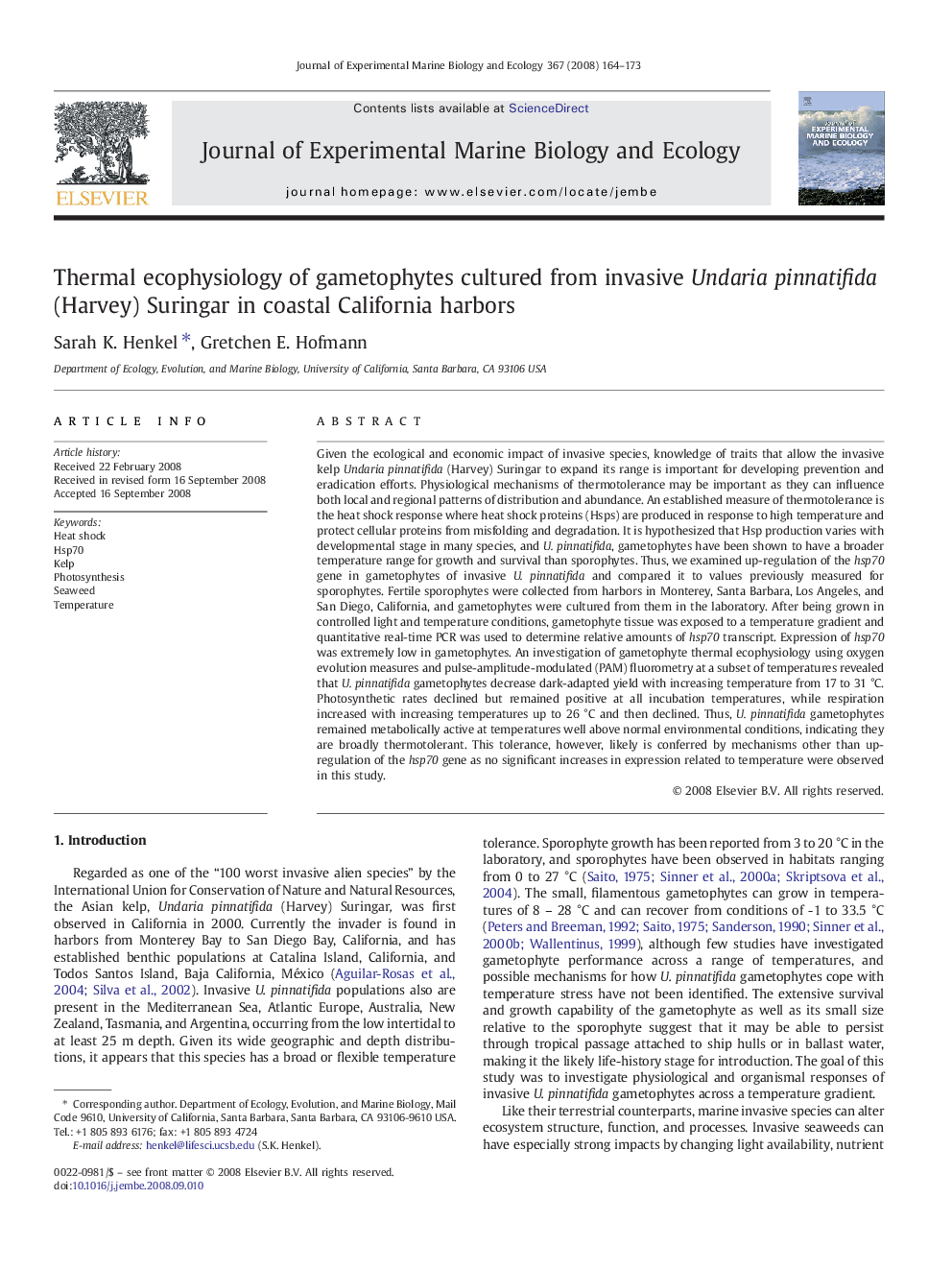| کد مقاله | کد نشریه | سال انتشار | مقاله انگلیسی | نسخه تمام متن |
|---|---|---|---|---|
| 4397129 | 1305866 | 2008 | 10 صفحه PDF | دانلود رایگان |

Given the ecological and economic impact of invasive species, knowledge of traits that allow the invasive kelp Undaria pinnatifida (Harvey) Suringar to expand its range is important for developing prevention and eradication efforts. Physiological mechanisms of thermotolerance may be important as they can influence both local and regional patterns of distribution and abundance. An established measure of thermotolerance is the heat shock response where heat shock proteins (Hsps) are produced in response to high temperature and protect cellular proteins from misfolding and degradation. It is hypothesized that Hsp production varies with developmental stage in many species, and U. pinnatifida, gametophytes have been shown to have a broader temperature range for growth and survival than sporophytes. Thus, we examined up-regulation of the hsp70 gene in gametophytes of invasive U. pinnatifida and compared it to values previously measured for sporophytes. Fertile sporophytes were collected from harbors in Monterey, Santa Barbara, Los Angeles, and San Diego, California, and gametophytes were cultured from them in the laboratory. After being grown in controlled light and temperature conditions, gametophyte tissue was exposed to a temperature gradient and quantitative real-time PCR was used to determine relative amounts of hsp70 transcript. Expression of hsp70 was extremely low in gametophytes. An investigation of gametophyte thermal ecophysiology using oxygen evolution measures and pulse-amplitude-modulated (PAM) fluorometry at a subset of temperatures revealed that U. pinnatifida gametophytes decrease dark-adapted yield with increasing temperature from 17 to 31 °C. Photosynthetic rates declined but remained positive at all incubation temperatures, while respiration increased with increasing temperatures up to 26 °C and then declined. Thus, U. pinnatifida gametophytes remained metabolically active at temperatures well above normal environmental conditions, indicating they are broadly thermotolerant. This tolerance, however, likely is conferred by mechanisms other than up-regulation of the hsp70 gene as no significant increases in expression related to temperature were observed in this study.
Journal: Journal of Experimental Marine Biology and Ecology - Volume 367, Issue 2, 15 December 2008, Pages 164–173